Synthesise the following :
(a) Benzyl alcohol from G.R.
(b) 2-Methyl-2-phenyl propanol from G.R.
( c) 2-Cyclopropyl ethanol from G.R.
(d) α-Phenyl ethanol from MeMgl.
( e) 2-Butanol from acetaldehyde
(f) Triphenyl methanol from benzophenone
(g) α,α-Diphenyl ethanol from acetophenone
(h) 1-Cyclopropyl-1-phenyl ethanol from PhMgBr.
(i) 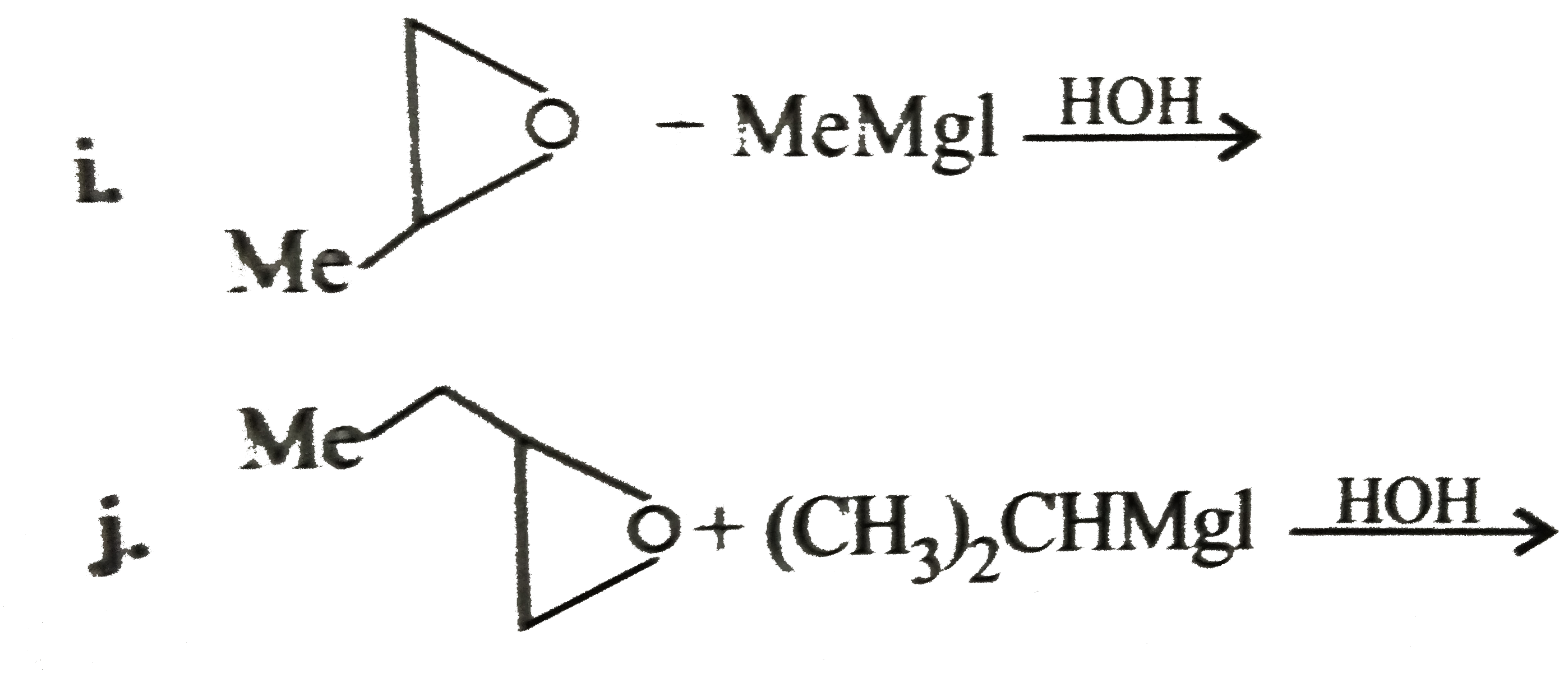
(a) 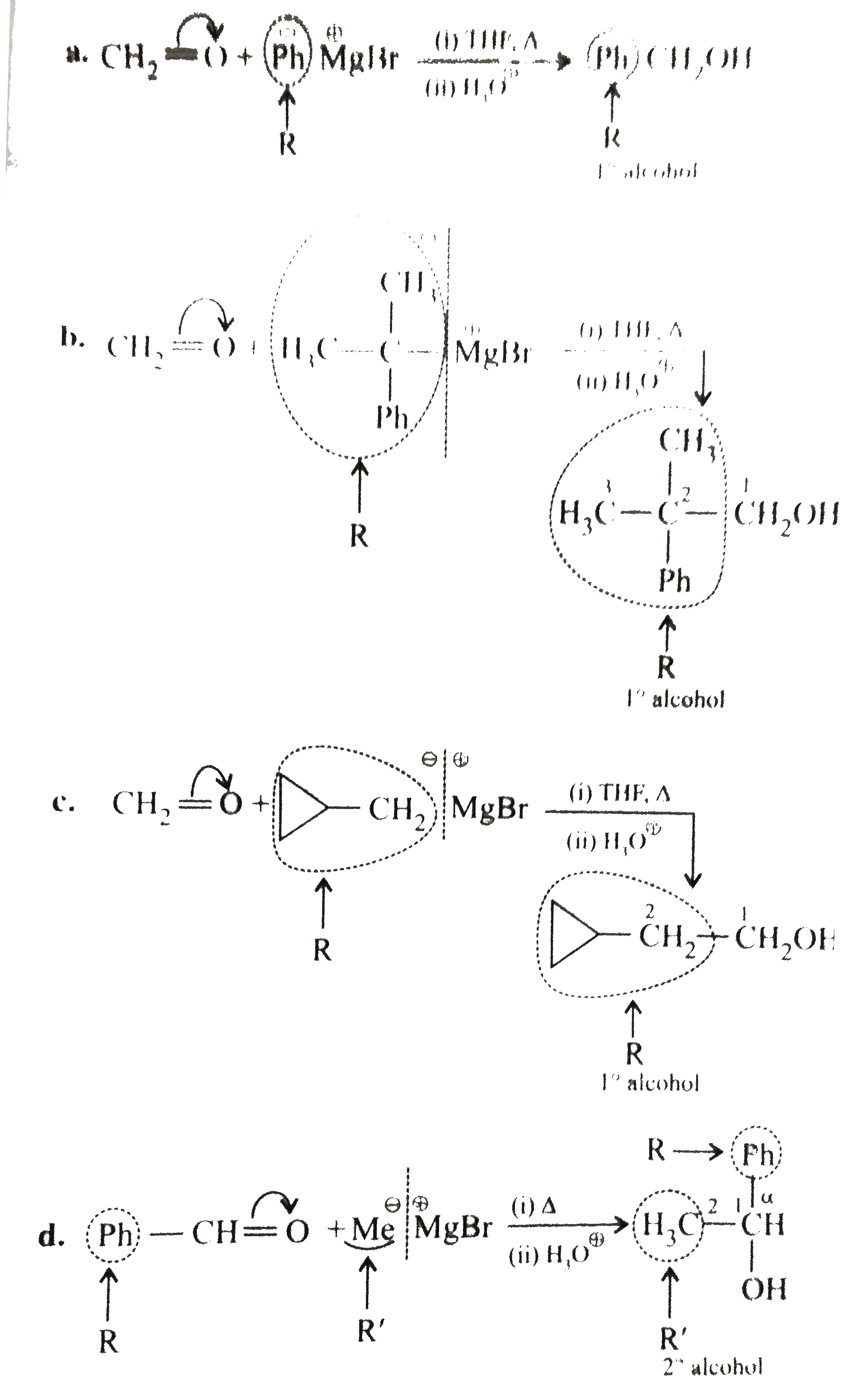
(b) 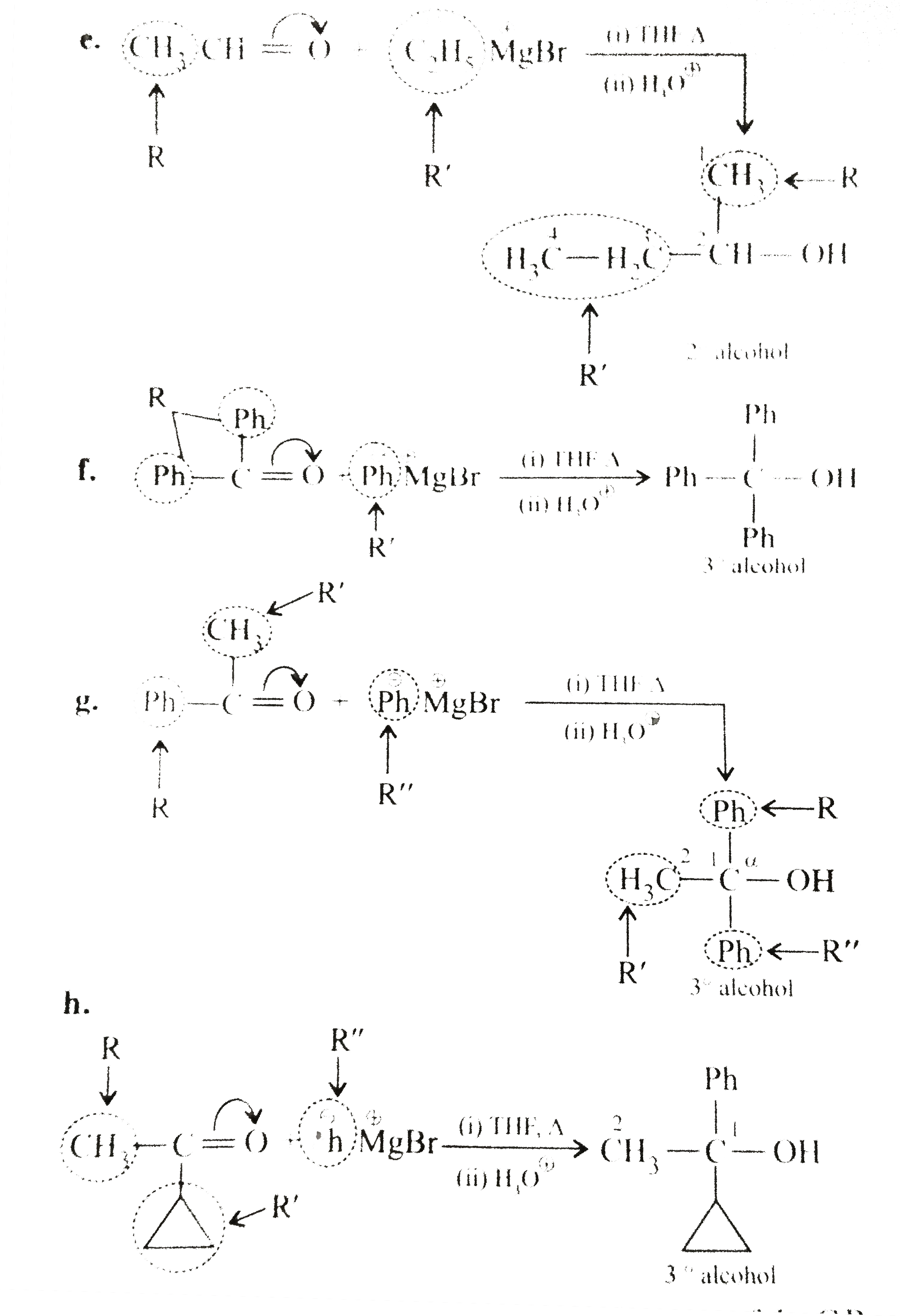
( c) 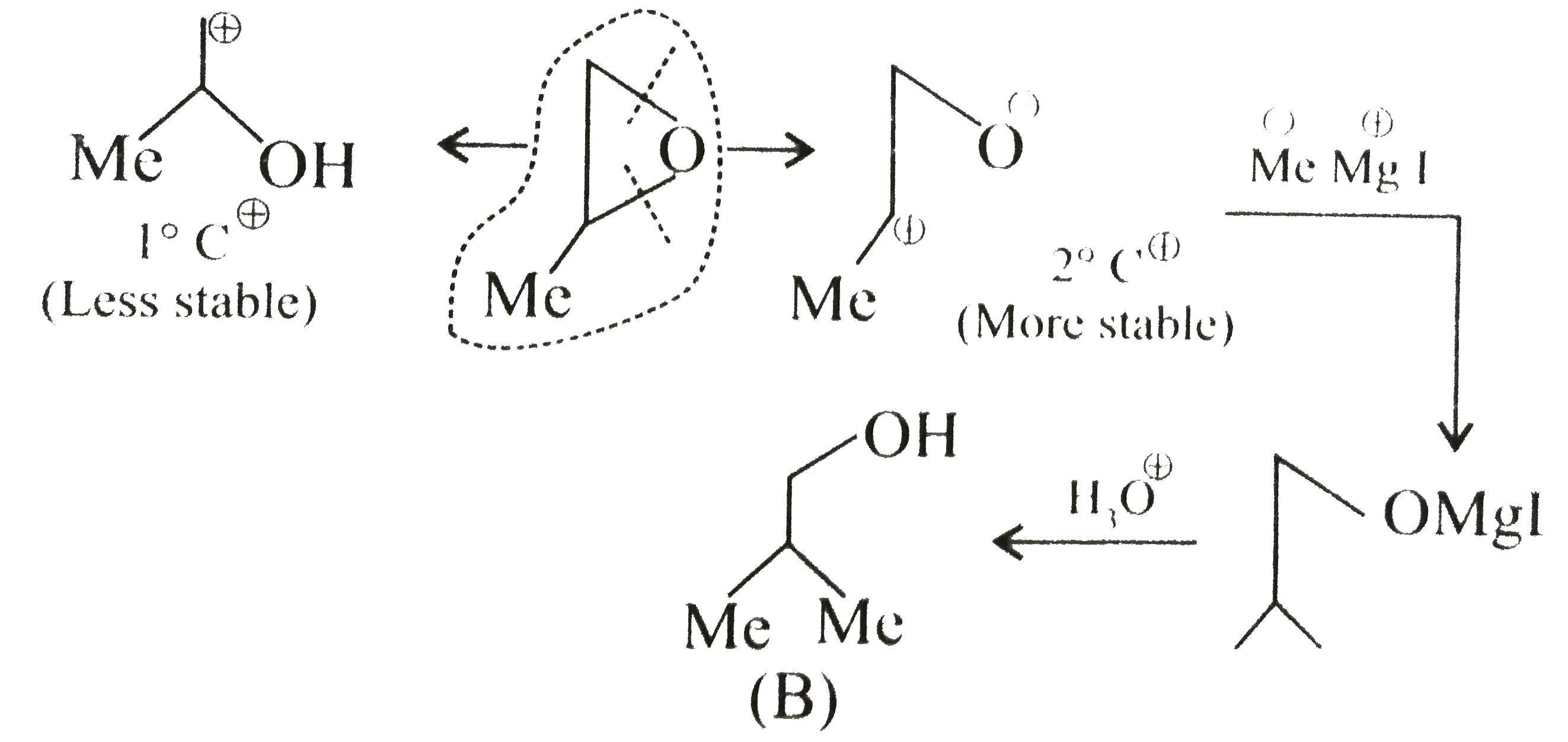
(h)
(i) This is an SN2 reaction in which the R group of the G.R acts as a nucleophile, while the MgBr coordinated with O and gives the product (A). We know that SN2 attack leads to the ring opening because the nucleophilic forms a bond with the less substituted C atom. Had it been and SN1−type reaction, the nucleophile would have been attached to the more subsituted C atom (due to the formation of stable C⊕ giving the isomer (B) which is it is SN1 :
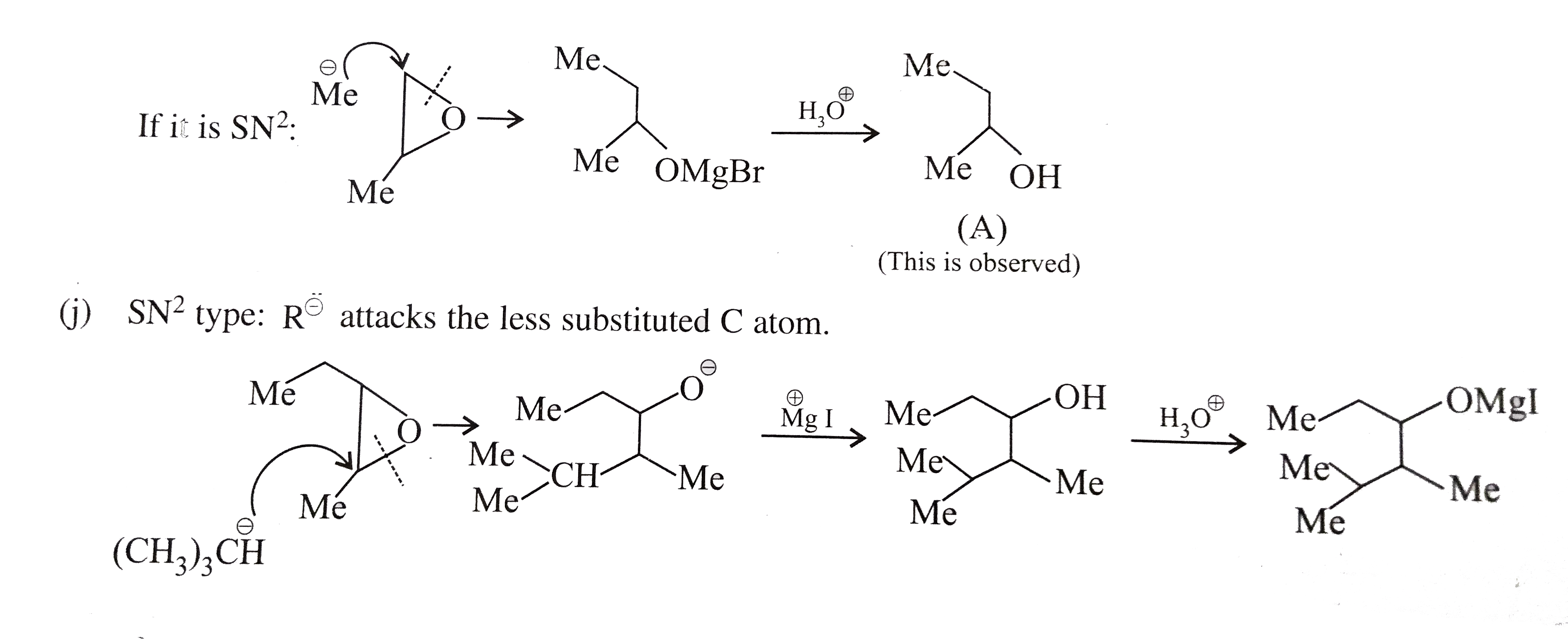

Topper's Solved these Questions
- GRIGNARD REAGENTS AND ORGANOMETALLIC REAGENTSBOOK - CENGAGE CHEMISTRYCHAPTER - GRIGNARD REAGENTS AND ORGANOMETALLIC REAGENTSEXERCISE - Solved Examples
15 Videos
- GRIGNARD REAGENTS AND ORGANOMETALLIC REAGENTSBOOK - CENGAGE CHEMISTRYCHAPTER - GRIGNARD REAGENTS AND ORGANOMETALLIC REAGENTSEXERCISE - Exercises (Subjective )
17 Videos
- GENERAL PRINCIPLES AND PROCESS OF ISOLATION OF ELEMENTSBOOK - CENGAGE CHEMISTRYCHAPTER - GENERAL PRINCIPLES AND PROCESS OF ISOLATION OF ELEMENTSEXERCISE - Archives (Subjective)
14 Videos
- NCERT BASED EXERCISEBOOK - CENGAGE CHEMISTRYCHAPTER - NCERT BASED EXERCISEEXERCISE - Nuclear Chemistry (NCERT Exercise)
29 Videos
Similar Questions
Outline a synthesis of each alcohol from the indicated starting materials.
(a) Isopropyl alcohol from a hydrocarbon.
(b) n-Butyl alcohol from acetylene.
(c ) Ally alcohol from propene.
(d) Glycerol from acetone or isopropyl alcohol or propene.
(e ) Glycerol from carbon and hydrogen or acetylene.
(f) n-Propyl alcohol from ethylene oxide.
(g) tert-Butyl alcohol from acetone.
(h) Isopropyl alcohol from acetaldehyde.
(i) 2-methyl propan-1-ol from formaldehyde.
(j) Cyclohexyl methanol from formaldehyde.
(k) 1-Phenylethanol from styrene (vinyl benzene).
(l) tert-Amyl alcohol from methyl magnesium iodide.
(m) 3,5-Dimethylhexan-3-ol from butan-2-one.
(n) Butan-1-ol from but-1-ene.
(o) Butan-2-ol from but-1-ene.
(p) Allylalcohol from propane.
View SolutionHow will you prepare the following ?
(a) n-Butane from ethyl bromide .
(b) Ethane from acetic acid .
( c) Ethane from ethane .
(d) Methane from acetic acid .
(e ) Ethane from methane in two steps.
(f) Ethane from ethanol in one step,
( g) Methyl chloride from aluminum carbide in two steps.
(h) propane from methane .
View SolutionHow is ethanol obtained from 2- butene?
View SolutionHow will you synthesise ?
(a) Divinyl ether from ethylene.
(b) n-Butyl alcohol from ethylene.
(c ) Diethyl ether from ethyl iodide.
(d) Ethyl methyl ether from methyl iodide.
€ Diethyl ether from dimethyl ether.
(f) Ethyl methyl ether from ethyl alcohol .
(g) 1-propoxy-2-methylpropane from 1-chloropropane.
View SolutionFrom the following G.I. is shown by :
a.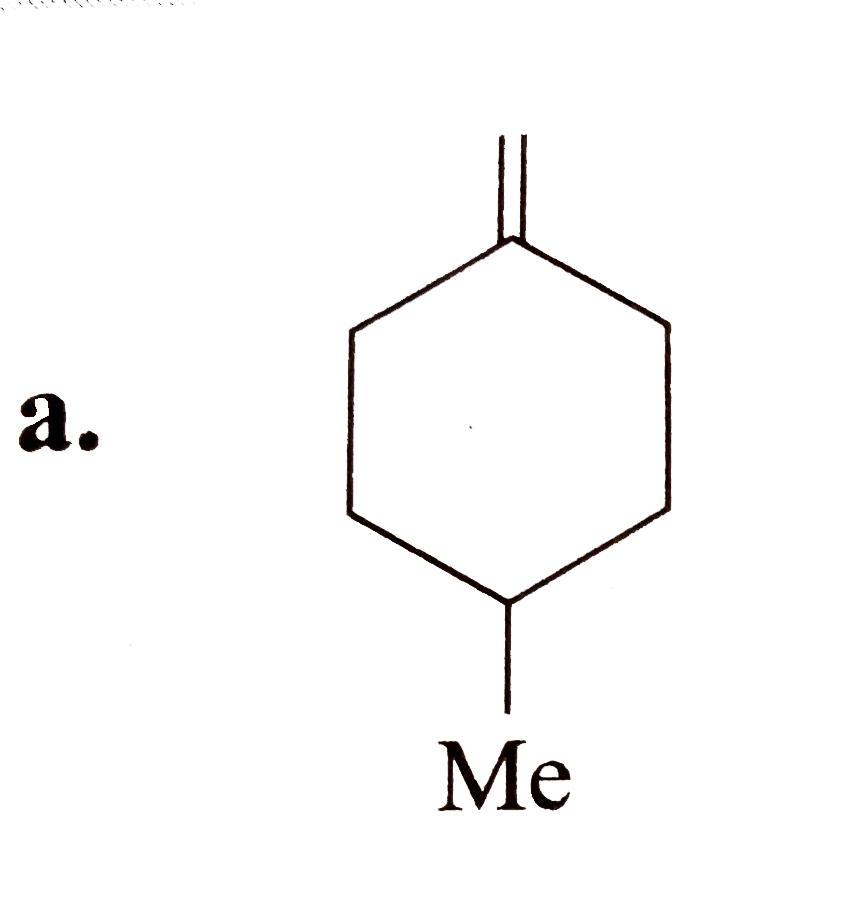 b.
b. 
c.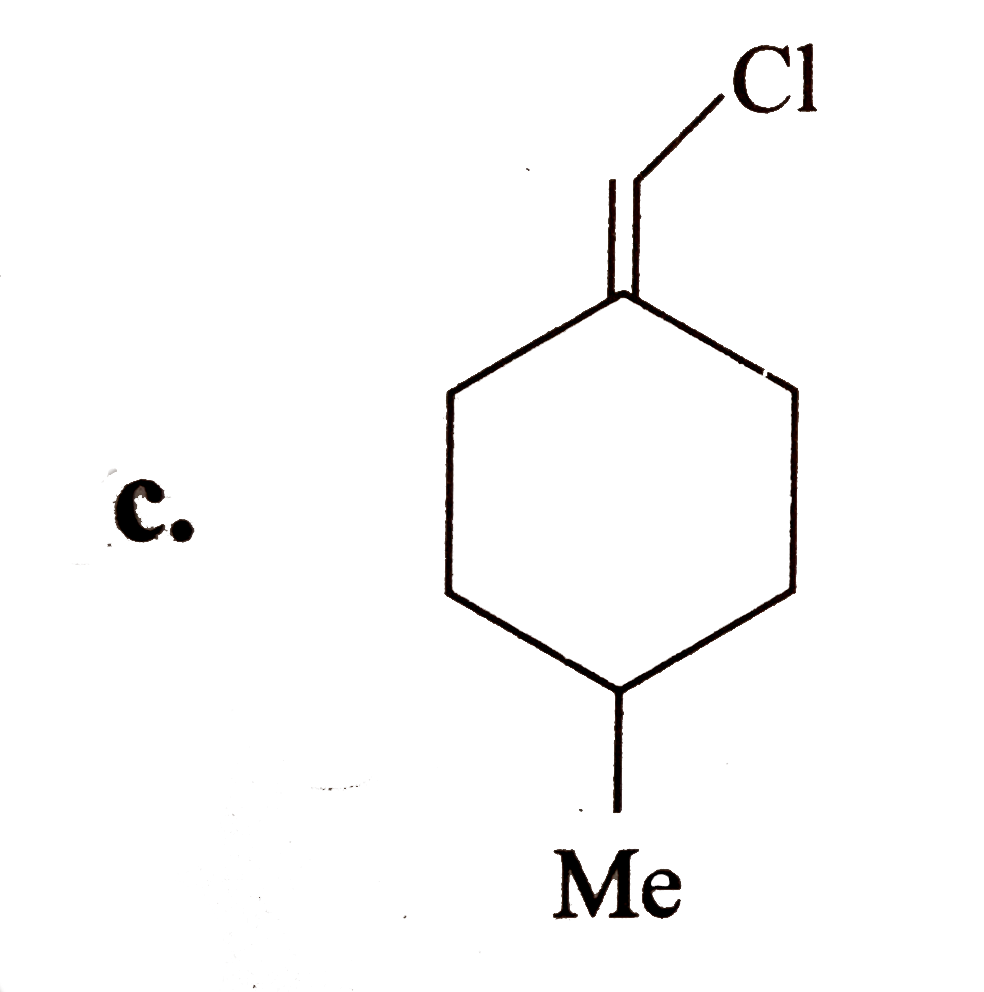 d.
d. 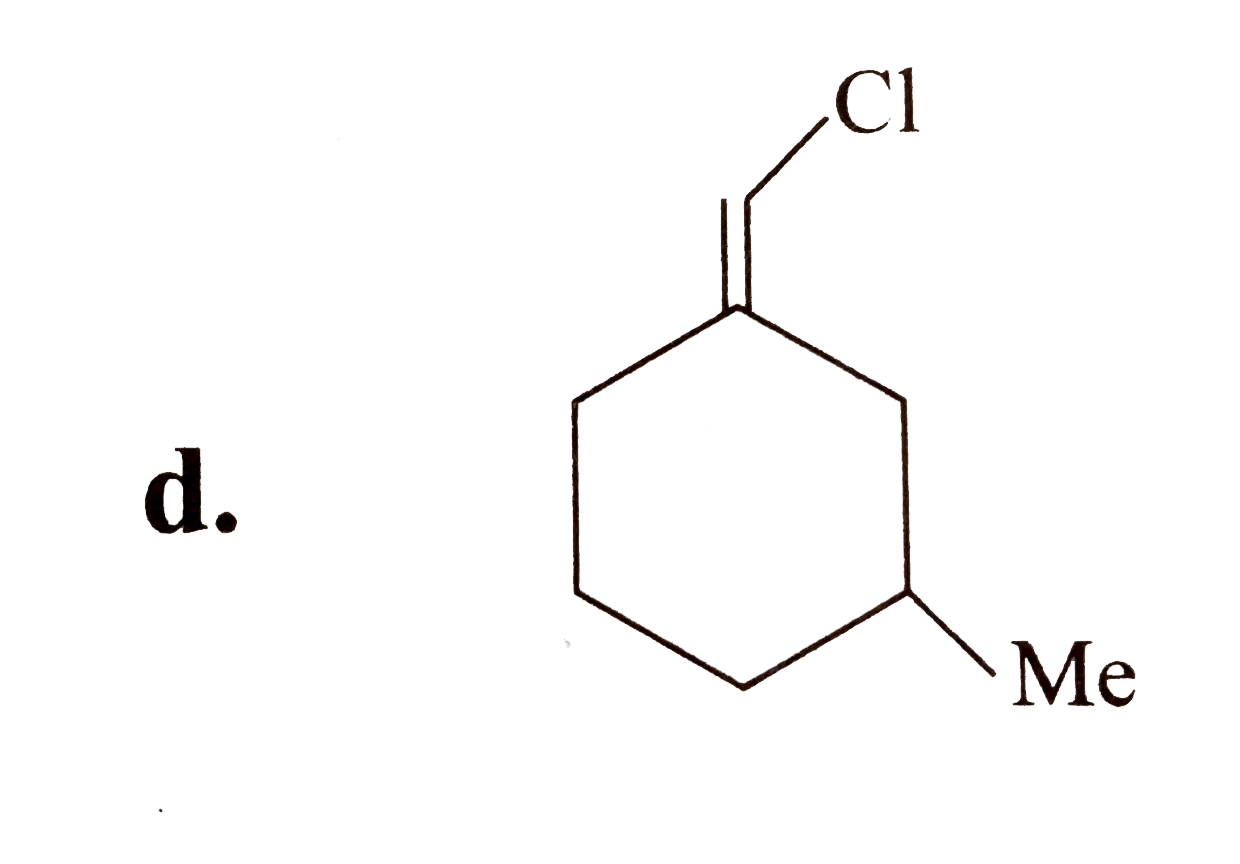
View Solution(1+tanαtanβ)2+(tanα−tanβ)2=
View Solution(1+tanαtanβ)2+(tanα−tanβ)2=
View SolutionHow will you distinguish among the following pairs?
(a) n-Propyl alcohol and isopropyl alcohol
(b) n-Butyl, sec-butyl and tert-butyl alcohols.
(c ) Ethanol and chloroform.
(d) Ethanol and acetone.
(e ) Ethanol and propan-1-ol.
(f) Glycerol and suger solution.
(g) Allyl alcohol and n-propyl alcohol.
View SolutionHow would you prepare but-2-enal from ethanol?
View SolutionHow will you synthesise ?
(a) Isopropyl bromide from n-propyl bromide.
(b) n-propyl bromide from isopropyl bromide.
(C) Propionic acid from ethyl bromide.
(d) 1- Bromopropane from 1-chloropropane.
(e) Ethylene glycol from ethyl chloride.
(f) Chloroform from ethyl alcohol.
(g) Iodoform from acetylene.
(h) vinyl bromide from ethyl alcohol.
(i) Allyl chloride from propane.
(j) Methyl iodide from methane.
(k) o- Bromobenzoic acid from toluene.
(I) o-Chlorotoluene from toluene.
View Solution
